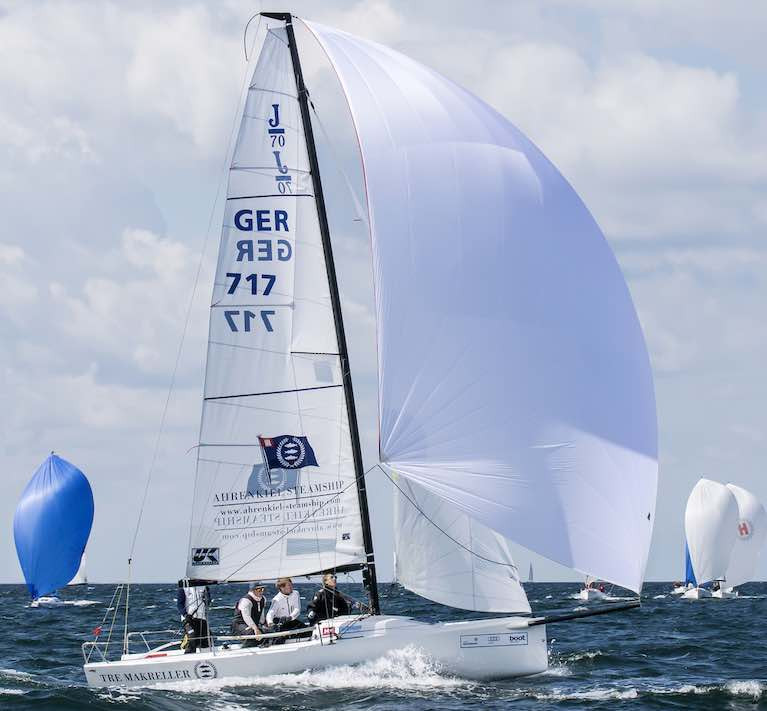Small fathead mainsails, where the roach of the sail is increased due to a considerably wider head of the sail, are starting to pop-up on the racecourse and they are proving to be a winner. Getting extra sail area on your boat can be really hard without taking a big rating hit, but increasing your crane size will give you that extra bit needed without too much out-of-pocket cost or dramatically affecting your rating.
Some yacht designers are already doing this in their new designs like the J/70 and J/88, for example. These are a great example of a boat getting extra area without having a very tall mast. To get the same amount of power while also reducing tipping weight and decreasing drag aloft.
Ratings
The extra area gained is only from the top quarter of the mainsail, in the photo below you can see the pink line.
 extra area gained is only from the top quarter of the mainsail
extra area gained is only from the top quarter of the mainsail
This means that the only rating change is on the MUW measurement which only moves out a tiny bit. Your headboard increases from 0.15 m out to 0.45 m or larger depending on the crane size you can add. This is a very big increase in sail area which is almost free at the top of the sail from a rating perspective.
Design
 Drag off the pin head main
Drag off the pin head main
The extra area makes a marginal speed increase upwind but it does reduce drag a fair amount. In the photo above, you can see the drag off the pin head main which is considerable compared to a slightly fatter head main. Importantly, the airflow sticks to the top of the sail longer creating less drag and generating more lift.
This bigger mainsail really comes into its own downwind and reaching. Off the wind is where the fathead main can be of most effective! The draft at the head of the sail will move slightly aft as you twist off the sail. But it also allows you to open and close the leech of the main quickly—letting you power up the boat or dump more quickly as the sail twists more. See the photo below.
 Off the wind is where the fathead main can be of most effective!
Off the wind is where the fathead main can be of most effective!
Mast
Normally, increasing the crane size from 0.15 of a metre to 0.4 is a big structural job. You will need to check with your mast builder to see if it can be done. The primary area to consider is the mast's bend characteristics, which will change, making the luff curve of the main slightly different. As the crane increases and applies more load on the top of the mast, it bends more while also applying a lot more load above the forestay. You will need to confirm your forestay can take the additional load. The side plates of the crane will move further down the sidewall of the mast to try and take this extra load, but it's best to check with your mast builder to ensure you don't break the crane off.

Halyard
With a fathead mainsail, it's important to add a 2:1 halyard. This allows the head of the sail to articulate and not point load on the sheave. It also balances the main going from a beat to a run as the very top corner of the mainsail luff tape is pulled away from the mast on a beat. The 2:1 halyard will take this load and balance it out so there is no point loading, pulling the head of the main into the mast at all times. The mainsail designer will move the head ring aft to allow for this.
Conclusion
Adding extra area to the top of your mainsail will give you extra power, less drag, and a more efficient mainsail. However, it's totally dependent on your mast builder saying it is possible and practical. Trust me, it works really well on most modern yachts.

So, if you need some power and you're all maxed out, look up the answer is in front of you.



























































